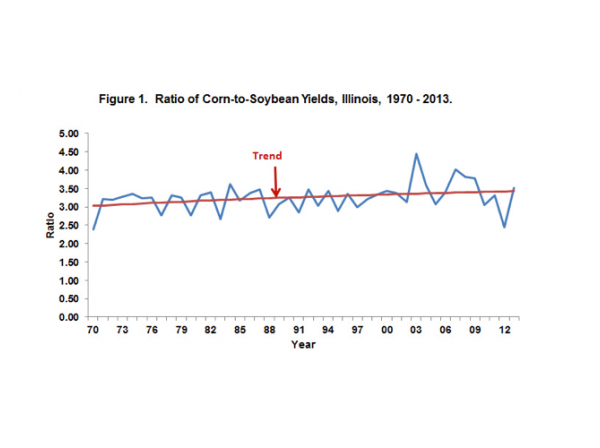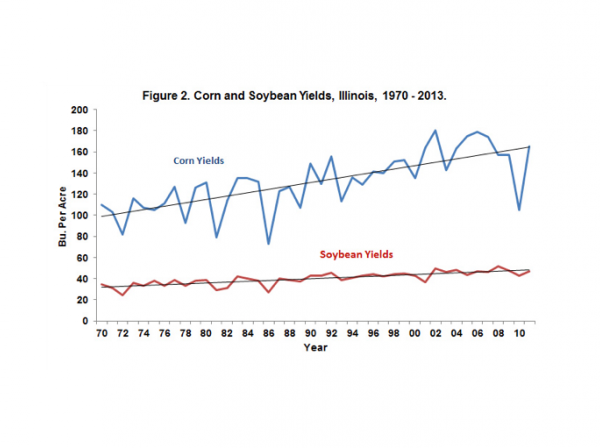Corn-to-Soybean Yield Trends: History and the Future
The National Agricultural Statistical Service or NASS projects the 2013 yields for the state of Illinois are 165 bushels per acre for corn and 47 bushels per acre for soybeans, giving a corn-to-soybean yield ratio of 3.51 (3.51 = 165 bushel corn yield / 47 bushel soybean yield). This 3.51 ratio in 2013 is much higher than ratios between 2010 and 2012, but below the ratio’s average from 2000 to 2009 says University of Illinois Extension Farm Management Specialist Gary Schnitkey.
The corn-to-soybean yield ratio has trended up over time in the state of Illinois. It averaged 3.12 during the 1970s, 3.16 during the 1980s, and 3.18 during the 1990s.

The highest corn to bean yield ratio for the state of Illinois came in 2003 when it took the yield from 4.43 acres of soybeans to equal the yield, in bushels, from one acre of corn. The last three years, however, have shown the ratio in decline from the 2000-2009 average. Farmers, over that time says Schnitkey, have followed the lead of the math, and planted a few more acres of soybeans from one year to the next.
Let’s go through the math, again. It is a simple ratio; bushels of corn per acre divide by bushels of soybeans per acre. The higher the answer goes the more profitable, most likely, it is to plant corn rather than soybeans. It has gone from the 3.12 in the early 1970’s to 3.51 (projected) for this year.

A ratio between 3.4 and 3.45 seems reasonable for the state of Illinois in the future thinks Schnitkey. The highest ratios, by the way, have come when statewide average corn yields are above 170 bushels to the acre. It was 180 in 2004, 175 bushels in 2007, 179 in 2008, and 174 in 2009. Since 2009, Illinois has not had a state yield over 170 bushels per acre.
